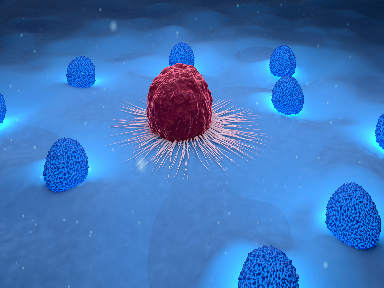americanpharmaceuticalreviewJuly 15, 2021
Tag: IncellDx , COVID-19 , PASC
Two new studies propose the first model for diagnosing, indexing and monitoring Post-Acute Sequelae of COVID-19 (PASC), also known as long COVID or long haul COVID. Long COVID is believed to affect as many as 30 percent of people who have recovered from initial infection with COVID-19

In the study, patients with previous COVID infection and lingering symptoms were found to have a distinct immunologic profile characterized by differentiated proportions of monocyte subsets. In the study, the presence of SARS-CoV-2 S1 protein was investigated in 46 people. T-cell, B-cell, and monocytic subsets were analyzed in both severe COVID-19 patients and in patients with post-acute sequelae of COVID-19 (PASC). The levels of both intermediate (CD14+, CD16+) and non-classical monocyte (CD14Lo, CD16+) were significantly increased compared with healthy controls. Neither monocyte subset was elevated in cases of severe COVID-19. Additionally, the SARS-CoV-2 protein subunit S1 was present in non-classical monocytes among patients thought to have PASC for up to 16 months following initial infection. Monocytes, a type of white blood cell, are involved in adaptive immunity and are instrumental in attacking viruses and other pathogens.
In the study, 224 individuals were assessed using machine learning for severity and chronic symptoms following initial infection. CCL5/RANTES, IL-2, IL-4, CCL3, IL-6, IL-10, IFN-γ, and VEGF were all significantly elevated in long COVID patients compared to healthy controls (P<0.001), while GM-CSF and CCL4 were in significantly lower levels than healthy controls (P=0.01). Data were analyzed to generate objective disease scores for PASC and severe COVID patients.
“In these studies, we used machine learning to determine that long haulers have a distinct immunologic profile suggesting a high degree of vascular inflammation, which we were then able to develop into an index for objectively diagnosing and monitoring the progress of PASC patients,” said Bruce Patterson, MD, CEO of IncellDx. “The data also suggests a model for understanding the possible cause of PASC. We found SARS-CoV-2 Spike protein in non-classical monocytes, which we know travel all around the body including through the blood-brain barrier, and are mobilized during exercise, which may explain why almost every long hauler has exercise intolerance. These cells are bound by what’s called the fractalkine receptor and CCR5 and patrol and ultimately cause inflammation of the cells lining blood vessels all around the body. By blocking the CCL5/CCR5 pathway and the fractalkine/fractalkine receptor pathways, we may have an approach to treat the cause of PASC rather than the symptoms.”


Contact Us
Tel: (+86) 400 610 1188
WhatsApp/Telegram/Wechat: +86 13621645194
Follow Us:




 Pharma Sources Insight January 2025
Pharma Sources Insight January 2025


